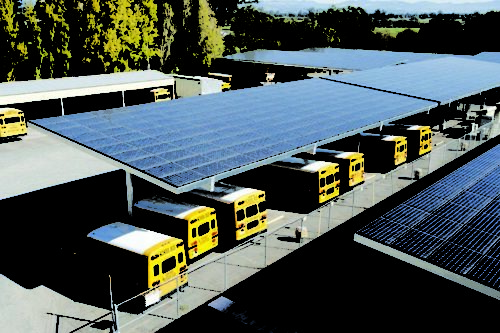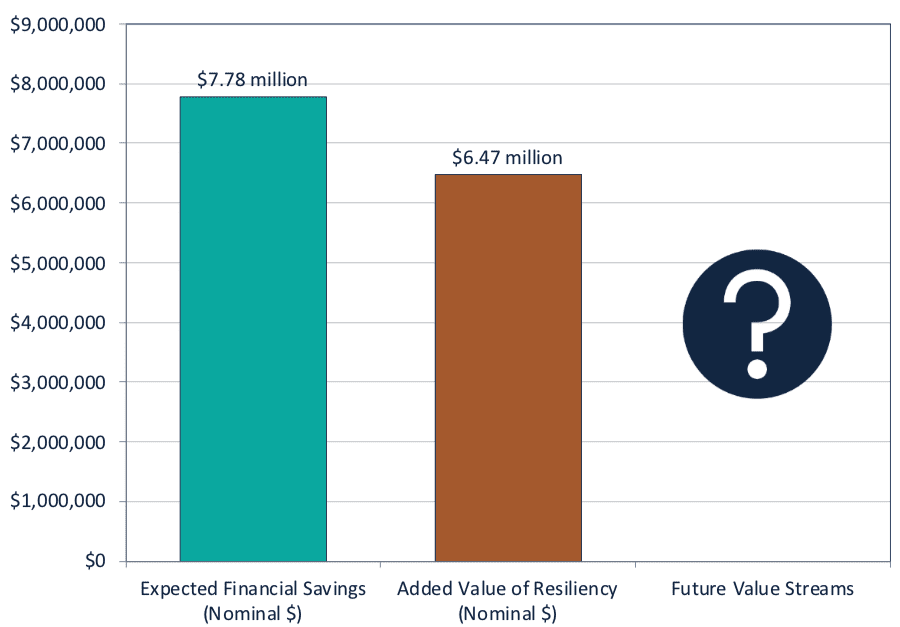
Solar Microgrids for Santa Barbara Unified School District are set to move forward
A groundbreaking RFP process and PPA contract ensure massive bill savings and unparalleled resilience value for free at a California school district.
2021 started on a high note for Solar Microgrids and the Santa Barbara Unified School District (SBUSD). On 12 January, the SBUSD Board voted unanimously on a contract with Engie Systems for Solar Microgrids at six school sites and standalone solar at another eight sites. Engie will build, own, and operate the systems under a 28-year power purchase agreement (PPA), and the District will reap massive benefits in guaranteed bill savings from the deployments, while enjoying an almost equivalent amount of free resilience value from the Solar Microgrids.
A perfect location for Solar Microgrids
The SBUSD is located in one of the most grid-vulnerable regions in California, the Goleta Load Pocket (GLP): a 70-mile stretch of Southern California coastline stretching from Point Conception to Lake Casitas, encompassing the cities of Goleta, Santa Barbara (including Montecito), and Carpinteria. The area gets most of its power from just one Ҭset of transmission lines routed through 40 miles of mountainous terrain that is highly prone to wildfires, mudslides, and earthquakes.

This transmission-vulnerable, disaster-prone area provides the perfect opportunity for the Solar Microgrids, which will bring the region unparalleled economic, environmental, and resilience benefits. The SBUSD Solar Microgrids provide early building blocks for the broader Goleta Load Pocket Community Microgrid (GLPCM), which is staging to provide resilience to the entire region.
Getting the District on board
Schools are increasingly realizing they can save money with solar; now they are also becoming aware of the unparalleled resilience provided by renewables-driven microgrids. A report on solar in US schools released in September 2020 highlighted the bill savings, educational opportunities, and resilience benefits that many schools are enjoying from solar+storage and included a section featuring the SBUSD Solar Microgrids.
Schools are ideal sites for Solar Microgrids, because they are located throughout our communities, serve as community centers, and are often used as emergency shelters. With large parking lots, schools are also well situated to benefit from solar parking canopies and electric vehicle charging infrastructure (EVCI).
The SBUSD showed impressive leadership in being among the first to adopt Solar Microgrids throughout a school district. After connecting with the Clean Coalition, the SBUSD Board unanimously voted in December 2019 to engage the Clean Coalition and Sage Energy to move forward on the Solar Microgrids. Following extensive feasibility analyses at all SBUSD sites, the SBUDS agreed to move forward with recommendations for solar Solar Microgrids at six sites and solar alone at eight additional sites.

Quantifying resilience benefits
The next step was designing and executing a groundbreaking request for proposal (RFP) process and a PPA that reflect highly innovative specifications based on the Clean Coalition’s value-of-resilience (VOR) methodology, referred to as VOR123.
The VOR123 calculations added a compelling element to the feasibility analyses, showing the full economic benefits of implementing Solar Microgrids across the SBUSD. The results below indicate the massive level of guaranteed bill savings from the fourteen projects – and the almost equivalent value of resilience that the SBUSD will enjoy from the six Solar Microgrids. These impressive figures made it easy for the SBUSD to proceed with the projects.

Innovating the contract
Given the relative newness of Solar Microgrids, there were significant innovations required in the RFP design. Even bigger innovations were required in the PPA contracts, which needed to incorporate guaranteed bill savings from solar+storage and guaranteed resilience performance associated with the Solar Microgrids. These needed innovations led to complex contract negotiations, and in the end, resulted in standardized Performance Guarantees in terms of guaranteed bill savings and resilience performance. Similarly, all prospective PPA providers of Solar Microgrids must prepare to deliver VOR123 resilience and guaranteed bill savings.
The Clean Coalition was able to help structure and negotiate a successful contract process to reach agreement with Engie prior to finalizing the contracts that were approved at the SBUSD’s 12 January Board meeting. The good news is that the extensive work on the SBUSD contracts provides a blueprint for standardizing Solar Microgrid PPAs to ease the process for the multitude of school districts and other entities that will implement PPA-facilitated Solar Microgrids.
Giving the green light to proceed
With the SBUSD Board’s unanimous 12 January decision to move forward, the District is staged to begin enjoying bill savings and resilience benefits by the end of 2021. Construction would normally take place in the summer, when school is out of session, but given pandemic-related school shutdowns, construction might be able to start sooner.
The SBUSD Solar Microgrids are attracting significant attention and influencing many additional school districts to follow. Importantly, every school district, whether in California or beyond, should be able to enjoy the unparalleled economic, environmental, and resilience benefits of Solar Microgrids.
Read more:
- Santa Barbara School District Launches Game-changing Solar Microgrids (Transmission & Distribution World, 27 October 2020)
- Santa Barbara Schools Get Solar-Battery Backup, Saving Money at the Same Time (Greentech Media, 13 October 2020)
- Santa Barbara Selects Winner in School Microgrid RFP (Microgrid Knowledge, 29 September 2020)

